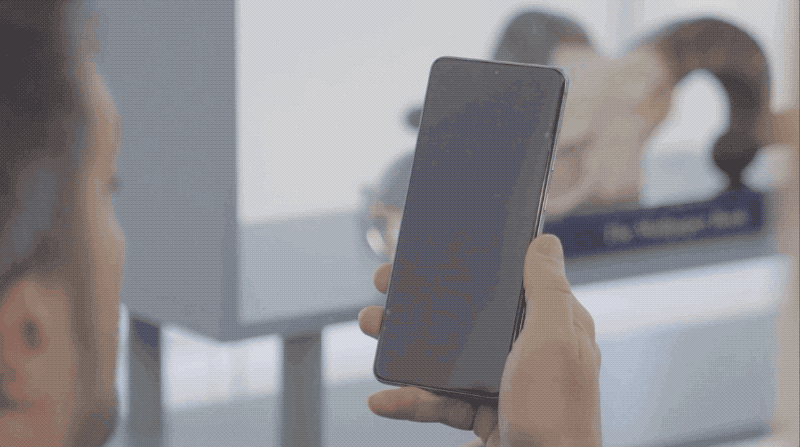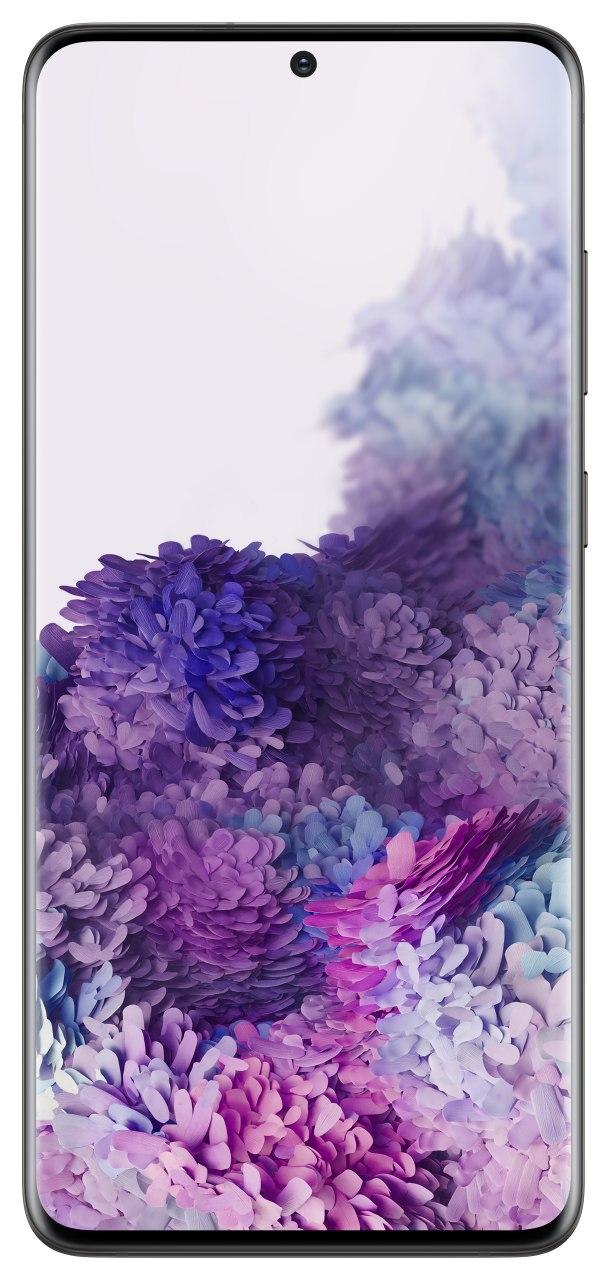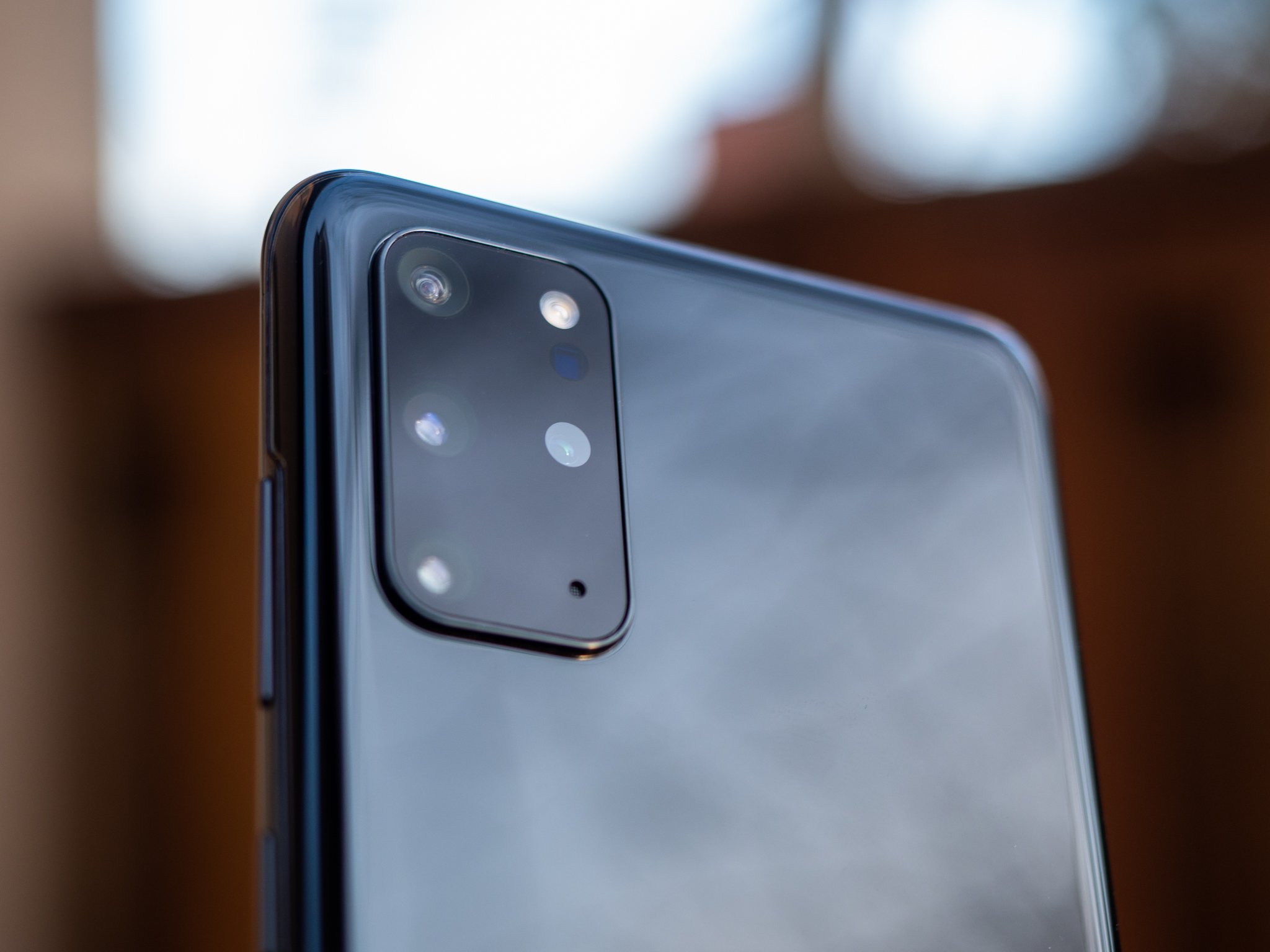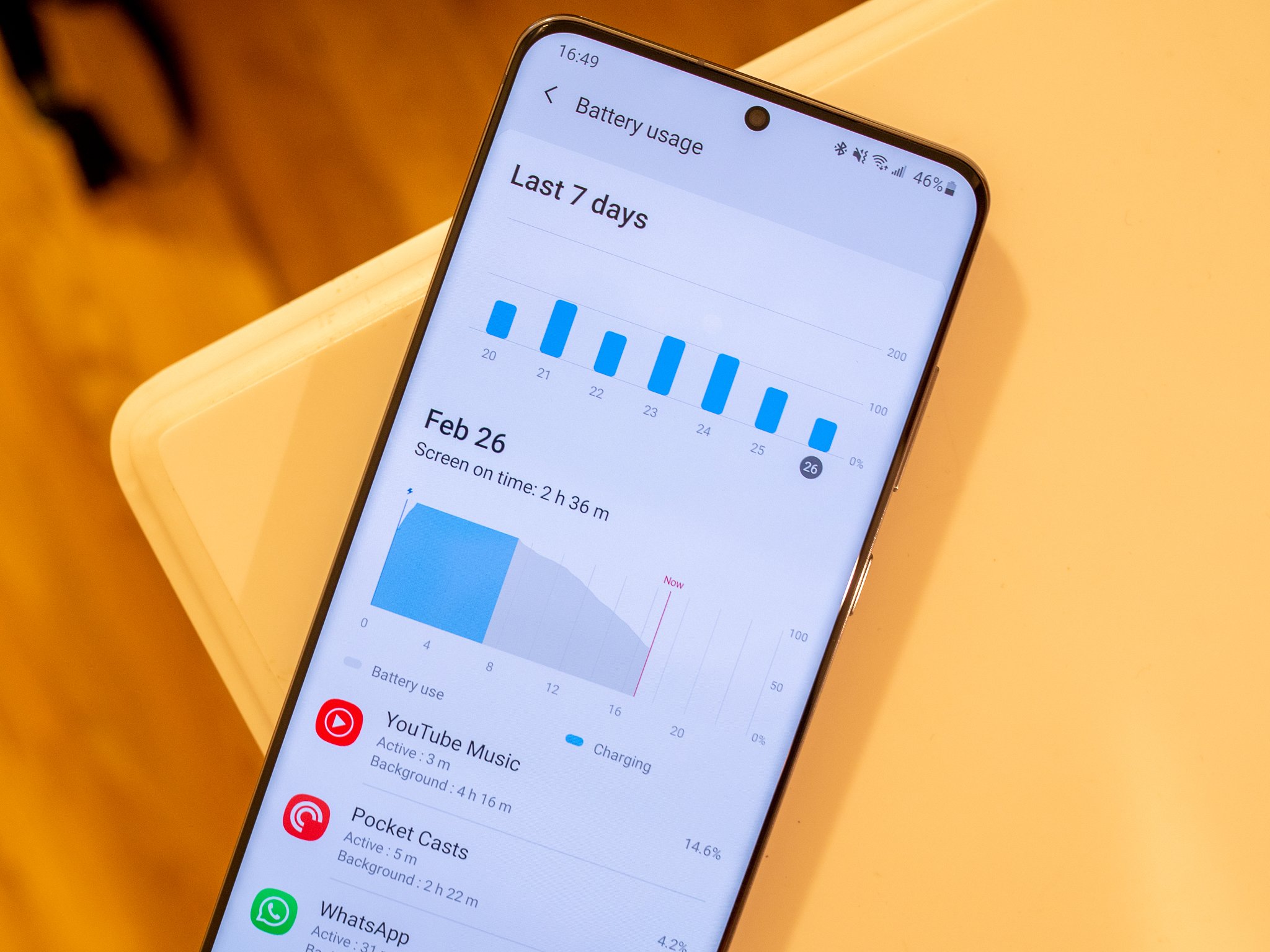A real Ultra.
If the Galaxy S20 Ultra is too much of a good thing, the Galaxy S20+ is just the right amount of goodness. Or greatness. It's the best phone I've used in a long time, and will hopefully get better with a few camera-tweaking updates sure to come in the next few months.
It also surprised me — I've had access to all three Galaxy S20 phones for nearly two weeks now, and where I thought I'd immediately gravitate to the inimitable camera of the S20 Ultra, or the perfect-in-the-hand size of the Galaxy S20, it's the Goldilocks-just-right middle ground of the S20+ that I think will appeal to most people this year.
Let's get into it.
A message from this review's sponsor, Incipio
Incipio is offering a new case for eco-conscious consumers called Organicore, and is now available for the Samsung Galaxy S20+ from Verizon. It's made from 100% compostable plant material, while still providing reliable drop protection from 6 feet in the air. Protect your investment and minimize your environmental footprint with Organicore.
Get the Incipio Organicore case for the Samsung Galaxy S20+ from Verizon
At a glance
Samsung Galaxy S20+
Bottom line: The successor to last year's top-of-the-line phone is the middle child this time around, but loses none of its appeal. In fact, with a more manageable size and weight, plus a superb primary camera that's sure to improve with updates, the Galaxy S20+ could be the best phone of 2020.
The Good
- The best phone display I've ever seen
- Classic Samsung design and build quality
- Incredible specs and performance
- Cameras are a joy to use
- Outstanding battery life
The Bad
- In-display fingerprint sensor is too slow
- Camera paints over facial detail
- 8K video has little practical value
$1200 at Samsung $1580 at Samsung Canada
This review was written using a Samsung Galaxy S20+ loaner provided by Samsung Canada. It was used on the TELUS network for seven days, and had build G986WLU1ATBN the entire time.
Samsung Galaxy S20+ What is this middle child, anyway?
Let's get the differences out of the way first: the Galaxy S20 Plus, or S20+ for brevity's sake, is the middle child in this year's early spring Samsung line-up. It's a bit thinner, a lot shorter, a bit narrower, and a lot lighter than the Galaxy S20 Ultra, with a far less pronounced camera module at the back.
The specs are also slightly slimmed down — it has the same Snapdragon 865, 12GB of RAM, and either 128GB or 512GB of storage, but there's no option to supersize the memory to 16GB like there is on the Ultra. The battery's a huge-but-not-so-ultra 4500mAh, and it only supports 25W charging (though the difference from 45W is negligible) and its display is a respectable 6.7 inches compared to the 6.9 inches on the Ultra.
The main difference is with the camera: the S20+ and its smaller counterpart, the S20, share basically identical camera setups, with a 12MP primary sensor that is physically smaller than the massive 108MP part on the Ultra; and there's a 64MP sensor used for telephoto shots, which lacks the Ultra's periscope zoom lens. The front-facing camera is also a smaller and less-dense 10MP.
For $1200, the Galaxy S20+ is still a $200 premium over last year's S10+, but it does appear like you get a lot more for your equivalent bucks. But as you'll see throughout this review, after having used both the S20+ and S20 Ultra, I can safely say the former is a better phone for most people.
Samsung Galaxy S20+ The display is perfect
I came to the Galaxy S20+ straight from using the S20 Ultra for a few days, so it felt like shedding an extra layer of skin. Lighter and more manageable, I've come to terms with the fact that while still a big phone, it's extremely well balanced and easy to hold and navigate with one hand. Samsung's done what it can to alter its One UI 2 software to be one hand-friendly, and that definitely comes across here.
There's no question about it — this is the nicest mobile display on a phone right now.
The first thing I did after setting up the S20+ was enable 120Hz on the gorgeous 6.7-inch AMOLED display, which feels like the absolute best of all worlds — beautiful colors, perfect viewing angles, incredible 240Hz touch response, and dazzling fluidity — and change the navigation settings from Samsung's traditional three buttons to its interpretation of Google's gesture system that debuted with Android 10.
On a Snapdragon 865 and 12GB of RAM, this phone flies, though that's no surprise. What is surprising is just how impactful the switch to 120Hz really is: after a while it starts to fade into the background, but blends into a subtle ruining of any phone that isn't set to a high refresh rate. That it doesn't come enabled out of the box is disappointing; it feels like Samsung is leaning away from one of its best features.
Of course, the reason it's not enabled by default is concern for battery life — there's a reported 25% hit when it's turned on. But as you'll see later on, I've enjoyed 120Hz since day one with the S20+ and have been extremely pleased. If you're buying the phone, I'd highly recommend trying both and seeing whether your usage allows you to maintain a high-refresh rate because it's absolutely worth it.
Samsung Galaxy S20+ This is a Samsung phone, for better or worse
Samsung made a bunch of good design decisions around the Galaxy S20 series — especially the smaller two models. The pinhole front camera is now centered, which provides much-needed symmetry and balance, and the hole is now tiny enough that it's barely noticeable in daily use. While I miss the wallpaper potential of the much larger right-oriented solution, this is far more elegant.
I'm also so, so thankful that Samsung solved whatever design problem that forced it to put the power button on the left side of the Galaxy Note 10 series. I'm not trying to discriminate against lefties — my brother's a leftie and he's great — but I never did quite get used to it. Samsung also came to its senses and combined the power button with the Bixby button — or what's left of it — in the Galaxy S20 series. While I encourage anyone to immediately disable Bixby and remap it to something else, at least this solution is tolerable.
There's no headphone jack, which sucks, but I haven't carried a pair of wired headphones since the first OnePlus Bullets Wireless were released, and have since moved on to something better. In fact, I've been using the Galaxy Buds+ alongside the S20+ since I unboxed it and the pair is, to put it succinctly, delightful.
The phone is slippery, so I'd recommend a good case for it — I love this year's crop of first-party options from Samsung, if you're in the market for one — but the good news is that, even with a case, it doesn't feel thick or unmanageable.
Using this phone feels like the near-perfect balance of size, weight, and comfort. And even with a case on it doesn't feel too thick.
That's the predominant feeling I had using the Galaxy S20+ — the ergonomics are outstanding. It's slim and light and well-balanced, and the only criticism I'd make is that, now that the power button is back on the right side where it belongs, I feel like the volume keys are a bit too high up. Given that this 21:9 aspect ratio phone is already so tall (this is less of a problem on the smaller S20), I would have liked to see both buttons shift down a few millimeters. It would be a compromise: the power button would be a bit harder to reach, but the volume keys, which I use much more often, would be less of a reach.
Samsung Galaxy S20+ Can't quite put my finger on it
Before we get into the camera, I want to mention the one, and truly only one, pain point I have with the Galaxy S20 series: its fingerprint sensor. It's not bad per se, not in the way that the Nokia 9's in-display sensor was basically unusable, but it's just slow and tedious enough that I feel it on a day-to-day basis.
The phone's only major hardware problem is its fingerprint sensor, which is unchanged from the Galaxy S10 series.
When I went to Qualcomm's Tech Summit back in December, the company was demoing the second generation of its ultrasonic fingerprint sensor, a much larger and faster part that maintains the 3D-texture-reading security of the original. In my naivety, I was certain Samsung would find a way to include that upgraded sensor in the Galaxy S20, as it always seems to have access to Qualcomm's first batch of new Snapdragon SoCs.
Unfortunately, it wasn't quite ready for commercial use, and Android Central has learned that Samsung did consider swapping out the first-generation Qualcomm sensor for a more mature, but slightly less secure, optical sensor — the type found on most phones today.

I guess Samsung figured continuity wouldn't hurt it too much, but I disagree: coming from the Pixel 4's ultrafast and super reliable face unlock, and before that the OnePlus 7T's incredible in-display optical sensor, I feel like Samsung missed out on really fixing, once and for all, its biometric inferiority. I can understand the reasoning, but I don't necessarily agree with it.
On the other hand, Samsung redeemed itself in the haptics department. The vibration motor in the Galaxy S20+ is identical to the one found in the Note 10 series, which were the first Samsung phones to include high-quality haptic engines and to utilize them properly across the operating system. Not only does the S20+ produce powerful vibrations for phone calls and notifications — you're not going to miss an incoming phone call when this is on a desk in the other room — but the motor is capable of subtle and granular feedback, too, for situations like typing.
Given that I'm the kind of person who will disable vibrations entirely on a phone with a poor quality vibration motor, I am deeply appreciative that Samsung is finally taking it seriously.
Samsung Galaxy S20+ The cameras
The camera is the most important feature of this phone and, for most people, for any phone.
Most people reading this review will want to know whether A) the Galaxy S20+ takes photos as good or better than the gargantuan Galaxy S20 Ultra, and B) whether the Galaxy S20+ stands up to phones like the Pixel 4 and iPhone 11 Pro.
The short answer is that, for the most part, the Galaxy S20+ is a big upgrade over previous Galaxy phones, including the S10 series, primarily because the main 12MP sensor is just so much larger. It's not quite the massive 70% jump we saw from the Galaxy S10+ to the Ultra, but the S20+ is still a comfortable 28% beefier than last year's model.
So that's where we begin. Photos taken with the Galaxy S20+ during the day are as good as ever, with lots of detail and exceptional balance preservation of shadow detail and highlights, thanks to Samsung's excellent if slightly-overbearing HDR.
Unlike the S20 Ultra, the S20+'s primary sensor is much more traditional — there's no pixel binning going on here. The 12 million pixels that make up the sensor are just bigger than what we found on previous Galaxy phones, and that means they let in more light. Samsung's also taking advantage of many of the Snapdragon 865's own improvements around post-processing, resulting in less noise in low-light conditions and, theoretically, more detail preservation indoors under artificial light.
Galaxy S20+ (top left) | Galaxy S20 Ultra (top right) | Pixel 4 (bottom left) | iPhone 11 Pro (bottom right)
The reality is a bit mixed: outdoor shots from the main sensor are superb, and the dual pixel autofocus capabilities built into the IMX555 sensor allow the S20+ to avoid the focus hunting that we've seen on the Ultra. The smaller sensor size also results in less natural bokeh and a wider plane of focus on a foreground subject, producing photos that look a lot more like traditional phone photos — for better or worse.
My major bugbear, though, is something that's affected every Galaxy phone since I can remember: Samsung smooths facial detail to a stupefying degree, resulting in photos of people that look soft, artificial, and often downright unusable. I suspect the company does this to minimize grain in less-than-ideal lighting environments, but I'll take pockmarks over a painting any day of the week.
Galaxy S20+ Scene Optimizer OFF (top left) | Galaxy S20+ Scene Optimizer ON (top right) | Galaxy S20+ Pro Mode (bottom left) | Pixel 4 (bottom right):** Here you can see the difference in skin texture and detail between the Galaxy S20+ and the Pixel 4.
If you take a look at the above images (I need a shave so badly), you can see that Samsung processes skin wildly differently depending on the mode. I took the above photos outside to remove any post-processing bias, but note that indoors, under warm artificial lighting, the differences are even more pronounced. All of the photos were taken with the rear primary camera with filters and beauty mode disabled.
The Galaxy S20+ cameras are stupendous almost all of the time — but facial smoothing is still an issue Samsung needs to address.
By default, Samsung appears to apply a smoothing mask to the entire face and then, in Auto mode with Scene Optimizer on, it brightens the skin tones while trying to suppress highlights. It also sharpens the edges which, because the original photo lacked detail, looks artificial. When shooting in Pro mode, the image is even softer — to the point where I thought my face was just out of focus. But I took the same shot several times and got identical results. Pro mode just leaves the original smooth mask on and doesn't boost exposure or highlights.
All four photos are actually quite good, but the Pixel 4 looks the most natural, both in terms of preserving facial detail and in the white balance. Samsung's photos are warmer, which gives my face a yellow pall that doesn't belong.
Galaxy S20+ (left) | Pixel 4 (right): You can see the same skin-smoothing effects at play in this indoor scene.
The other major area without much progress is capturing movement. I have a toddler, and she moves — constantly. When taking photos with the Pixel 4 or iPhone 11 Pro, those phones generally know to lock the shutter speed at number that will minimize, if not eliminate, motion blur, even if it results in a darker or grainier photo. Samsung, once again trying to minimize grain, tends to set its shutter speeds in these situations low enough that blur is almost guaranteed, even with a small amount of movement.
Samsung's Pro Mode solves many of these problems, and can be relied upon to produce more natural-looking photos in most situations. It's extremely versatile, offering granular control of focus, shutter speed, light sensitivity, exposure, bracketing, and more. And Samsung saves the mode you were previously in when starting the camera app, so if you want the best experience taking photos with the Galaxy S20+, I'd just leave it on Pro mode all the time. You don't have to mess with any of the settings — even with everything set to auto, the Pro mode delivers.
Where the Galaxy S20+ really excels is in low light: this is a much better nighttime camera than any previous Galaxy phone, and I'd argue that, thanks to the sensor's larger pixels, an even better low-light camera than the Galaxy S20 Ultra, despite that phone's pixel binning.
Night mode comparison: Galaxy S20+ | Galaxy S20 Ultra | Pixel 4 | iPhone 11 Pro | Galaxy Note 10. The Galaxy S20+ looks like it does the best job overall on this very challenging scene.
I think my main takeaway from taking a lot of photos with the Galaxy S20+ is that it's a better experience than any other Galaxy phone before it, and also the Ultra. It's easier to wield and steady with one hand, and the primary sensor is faster to focus, with a wider plane, and fewer proclivities for producing oddities and aberrations than the Ultra's sensor, which Samsung has less experience tuning.
Then there's the 64MP sensor, which is used in a hybrid role as a telephoto shooter and a high-resolution primary camera. Yeah, it's weird. See, there's no actual zoom attached to the 64MP sensor — its "lossless" zoom is achieved by taking all of those pixels and cropping in by 3X, producing 12.2MP photos at a distance that actually look pretty great.
The solution isn't quite as elegant, nor as physically imposing, as the Ultra's periscope lens, but in decent lighting, you'll get some excellent long-distance photos from this phone. Plus, you can use the telephoto sensor to take 64MP photos at its native focal length, eking out as much detail from a scene as possible.
Galaxy S20+ 1X / 10X / 30X (above) | Galaxy S20 Ultra 1x / 10X / 30x (below)
You can see above that, compared to the Galaxy S20 Ultra, the S20+ performs comparably well up to around 10X zoom, and then beyond that you see the Ultra's periscope able to eke out more detail from a scene. The S20+ maxes out at 30X while the Ultra goes all the way to 100X, but as Andrew explained in his review, the benefits are minimal beyond 10X, anyway.
Oh, and here are a couple of photos of a Very Good Boy at 1x and 3X zoom, respectively.
Let's round things up in the camera department:
- The selfie camera is indeed much improved over last year's phones. Like way better. Annoyingly better, because once you disable the on-by-default beauty mode on the front camera, you'll actually get more facial detail from the front camera than the rear one. Maybe that's the point? I don't know anymore.
- 8K video is plain dumb unless you're going to use it to crop in closer to a subject in post. Otherwise stick with the incredible 4K60 footage or, even better, the smooth-as-butter Super Steady Mode at 1080p.
- The camera app opens instantly. Every. Single. Time. It's wonderful coughPixelcough.
- Single Take is a gimmick that occasionally spits out a few beautiful frames. (In case you missed it, Single Take is a mode that shoots photo and video together for about 10 seconds and creates a reel full of mixed media that's largely forgettable.)
Samsung Galaxy S20+ All day and all night
The Snapdragon 865 in here is the best there is right now for Android users. If you want benchmarks, we have those. There's 12GB of RAM inside here, too, which is plenty. Like, don't worry about it. My favorite thing is that you can pin three apps in memory so they'll never close. I did that immediately with the camera, Spotify, and Pocket Casts, so I never have to pause a song and try to return to it a few minutes later only to realize the phone bumped it out of memory.
More impressive is the battery life on this thing. Now, I don't have 5G in my region, so I can't comment on that, but with a strong LTE connection throughout my testing period, the 4500mAh battery lasted seemingly forever, though in reality, it was long enough that I didn't once have to worry about it.
I was a bit worried about battery life, but I shouldn't have been: this phone lasts all day and then some, and there's absolutely no battery anxiety.
I'm talking about screen-on-times of six to seven hours in a day with 20% of battery to spare. I'm talking about waking up at 6:30 and going to sleep at midnight (I know, I know) without ever having to top up the phone during the day and not being stingy with my usage.
Charging the phone is also delightfully quick with the included 25W charger, going from dead to full in just over an hour (though beware that to achieve the "super charging" speeds Samsung offers it must use the charger in the box, as it supports PPS).
Samsung Galaxy S20+ A nice gesture
The Galaxy S20+ is the best Galaxy S20 phone you can buy, which makes it the best phone you can buy right now. It's not perfect, but it's close. Aside from the minor quibbles I have with some aspects of the camera, and the not-great fingerprint sensor, I have nary a criticism of the experience so far, and I've really tried to find some.
Much of my positivity can be attributed to the gains Samsung has made in the software department. I'm going to leave the bulk of the thoughts to my colleague, Andrew Martonik, who reviewed One UI 2 earlier this year, but I'll say this: you don't really notice the cruft anymore. Samsung still does things its way, and there are times you wonder whether it should do another culling of extraneous features, but somehow — from Edge Display to Bixby — it all just kind of works. Actually, I take that back: Bixby still needs to go.
Once I switched over to Google's way of navigating Android 10, I felt right at home. And honestly, I haven't wanted to leave.
Another message from this review's sponsor, Incipio
Incipio is offering a new case for eco-conscious consumers called Organicore, and it is now available for the Samsung Galaxy S20+ from Verizon. It's made from 100% compostable plant material, while still providing reliable drop protection from 6 feet in the air. Protect your investment and minimize your environmental footprint with Organicore.
Get the Incipio Organicore case for the Samsung Galaxy S20+ from Verizon
Samsung Galaxy S20+ Should you buy it?
At $1200, the Galaxy S20+ is not cheap. But if you're looking for a phone that does everything pretty well and a few things exceptionally, this should be your first choice. It's early still in 2020, but I don't see another phone coming along anytime soon that will unseat it — at least not entirely.
I still love the Pixel 4 XL and think the OnePlus 8 Pro, when it's released, will offer better value than the Galaxy S20+, but I can't dismiss the sheer volume of improvements Samsung made to this phone without losing the core vision of offering a giant screen on which you can do whatever you want.
The right stuff
Samsung Galaxy S20+
The successor to last year's top-of-the-line phone is the middle child this time around, but loses none of its appeal. In fact, with a more manageable size and weight, plus a superb primary camera that's sure to improve with updates, the Galaxy S20+ could be the best phone of 2020.






























0 Response to "You Can See More: Samsung Galaxy S20 Plus review: The best phone for most people"
Post a Comment